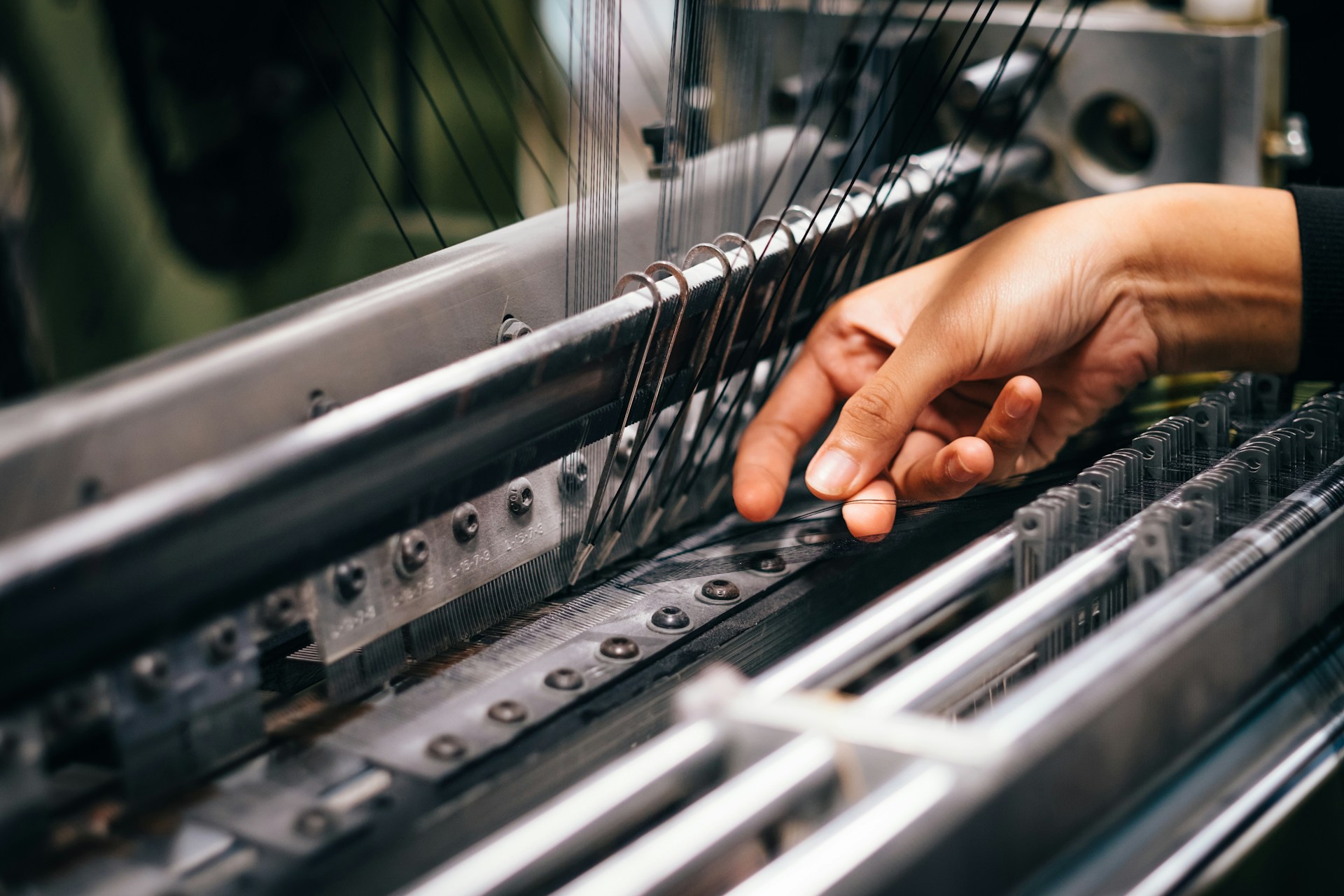
Interview With Compreli Part 2: Making EU Legislation Accessible for Non-EU Textile Players
The impacts of upcoming EU sustainability policy will be felt far beyond the block’s borders, but many non-EU textile organisations have no clarity about the changes on the horizon, and what they will mean for the future of their businesses.
In this second part of our interview with Ramesh De Silva, co-founder of Compreli Consulting, we will look at how prepared textile companies in countries like Sri Lanka, Pakistan and India are for these regulatory changes. Plus, relying on our guest’s first-hand experience with the matter, we will discuss what needs to change to make EU legislation truly accessible for non-EU organisations.
If you would like to learn more about the future of sustainability within textiles, don’t miss out our comprehensive interview series, featuring insightful discussions with industry experts such as:
- Sustainable Fashion Academy
- Melanie Hackler
- Chemsec
- H&M Group
- Sympatex
- Policy Hub
- Textile Exchange
- TreeToTextile
- EOG and FESI
Want someone with deep experience and connections in the EU to help guide your sustainability strategy? Get in touch!
Textiles in Sri Lanka, Pakistan & India: How EU-ready Is The Global Textile Supply Chain?
By 2030, the European Union aims to revolutionise its textile sector, prioritising sustainability, circularity, and accountability. The goal is for textiles in the EU market to be more durable, sustainable and high-quality, and to ensure that through enabling extensive reuse and repair options.
Although they will be essential in achieving that vision, current EU policies come with obstacles for non-EU organisations. Taking Sri Lanka, Pakistan and India as examples, Ramesh offers us an insider’s view of the realities of the textile industry in third-party supplier countries, and points to the lack of information as a fundamental issue.
“Since our industry is very EU focused, most of the factories we work with are already pretty green. But many smaller companies don’t have information about changing legislations, and they’re not really being educated by the brands they supply for regarding the new requirements they will have to meet. So the big manufacturers, with dedicated resources, can see what’s happening, but not the small guys.”
As explained in the first part of our interview with Compreli, since they are unaware of the potential losses for those who fail to comply, many can’t recognise the urgency of the matter. So it’s not only that smaller companies might lack the resources to invest in sustainability, but that most don’t see it as a priority for the moment and still perceive overproduction as a strategic business practice, for example.
When asked if manufacturers don’t exchange this legislation knowledge among themselves for strategic reasons, De Silva explains that in spite of the fact that competitiveness is not really an issue, the information flow still does not happen as it should.
“Big brands coming to Sri Lanka are looking for not only one, but a hub of suppliers, so manufacturers mostly feel like they’re in this together. But still there’s no mechanism in place for them to help each other. Some industry bodies, such as the Joint Apparel Association Forum, promote this kind of knowledge sharing, but it’s still not at the level that it should be since the information still doesn’t reach everyone.”
How to Close The Gap Between EU Legislation and Non-EU Organisations
When it comes to removing the barriers between EU policies and textile manufacturers in third-party countries, the solution has many layers and involves multiple stakeholders.
Textile Manufacturers: Time To Be Proactive
Ramesh believes that change must begin with the manufacturers themselves, who should proactively look for information wherever it is available. Online sources like the European Commission’s website, and the Ohana blog are great places to start.
They should also reach out to organisations who already offer this type of support within the global textile industry, such as the Transformers Foundation, EU development agencies like GIZ, and global organisations with a presence in EU countries such as IDH. Yet, he emphasises the importance of local networks as well.
“If all the information doesn’t necessarily reach the manufacturers, then the manufacturers can also go to their industry associations and look for it. Regardless of the country, I think that the local industry trade bodies should be their first stop.”
In his opinion, in addition to getting informed about the upcoming requirements, textile businesses will need a mindset change. Business leaders should set sustainability as a strategic priority, and make adjustments in their internal structures and policies. An example would be establishing a clear leadership to formally handle this subject, appointing Chief Sustainability Officers (CSO) instead of their usual Chief Compliance Officers (CCO).
“Many small and even middle-sized companies don’t have a CSO. They have a compliance officer to ensure that the human rights side of things is okay, that garments are packed appropriately, things like that. But they haven’t got into that sustainability frame of mind. In the end, nobody in these companies is looking at how to prepare for the new legislation because there is no one person in charge of it.”
“Manufacturers ought to prioritise compliance with EU CSRD and CSDDD regulations, along with the upcoming US Supply Chain Act set to take effect in the next few years. They will be required to report, audit, and ultimately mitigate the social and environmental impact of apparel manufacturing. Those delaying necessary changes risk falling behind. The moment is ripe for manufacturers to proactively adapt, staying ahead of the competition. Western brands will increasingly seek out manufacturers and manufacturing hubs based on their ESG performance.”
EU Businesses & Policymakers: The Need for Clear Standards and Close Collaboration
However, the proactivity of the manufacturers alone will not do. On top of understanding the reality of the non-EU organisations affected, in order to create realistic proposals, EU institutions must make the rules of the game very clear.
Although some manufacturing companies have already started collecting data regarding their sustainability performance, De Silva explains that there are many doubts as to what exactly needs to be measured.
He makes a call for crystal clear guidelines from EU legislators, with detailed information about the KPIs that will measure ESG compliance, and how this data should be interpreted and reported.
“The way I see it, the worst thing that can happen is that the regulations will come, companies will start capturing this data, and each one will start interpreting the rules the way they want.”
Ramesh also highlights the importance of a harmonisation of the requirements that EU legislation and brands will create for suppliers, and that the software and tools businesses will use in their monitoring must be standardised accordingly.
“From what I’ve seen, the tools and software currently used for this purpose vary a lot, and also don’t tell the actual story of what’s happening, because they look at very high level measurements.”
“Most tools will look at the garment type, – is it a top or a pair of pants – and what is the weight of the garment. With that, they try to come up with the environmental impact of the piece. But they would have to go much deeper and consider many other variables to get an accurate picture.”
This means that industry players should push to join the EU discussions of how such requirements will be set, acting as subject-matter experts, if we want to ensure tangible benefits for the environment.
Still making a case for technical accuracy in assessing a company’s environmental performance, he offers an example of what could happen in the absence of specific criteria.
“Manufacturer A ticks a box in the system saying they use coal as their energy source. While manufacturer B ticks another box, stating that they rely on green energy, because they have solar panels. But in reality, only the sewing stage of their production is done with solar energy, and the rest is also coal. So we really need to go deep into detail.”
Finalising our conversation, De Silva stresses that businesses and stakeholders at every level must keep informed and be aware of the responsibilities of both brands and suppliers across different pieces of legislation. We couldn’t agree more.
Want someone with deep experience and connections in the EU to help guide your sustainability strategy? Get in touch!
Join our newsletter to keep up to date with the latest news and information coming out of the EU.


